Peking University Space Station Two-Photon Microscope Inducted into the National Museum of China
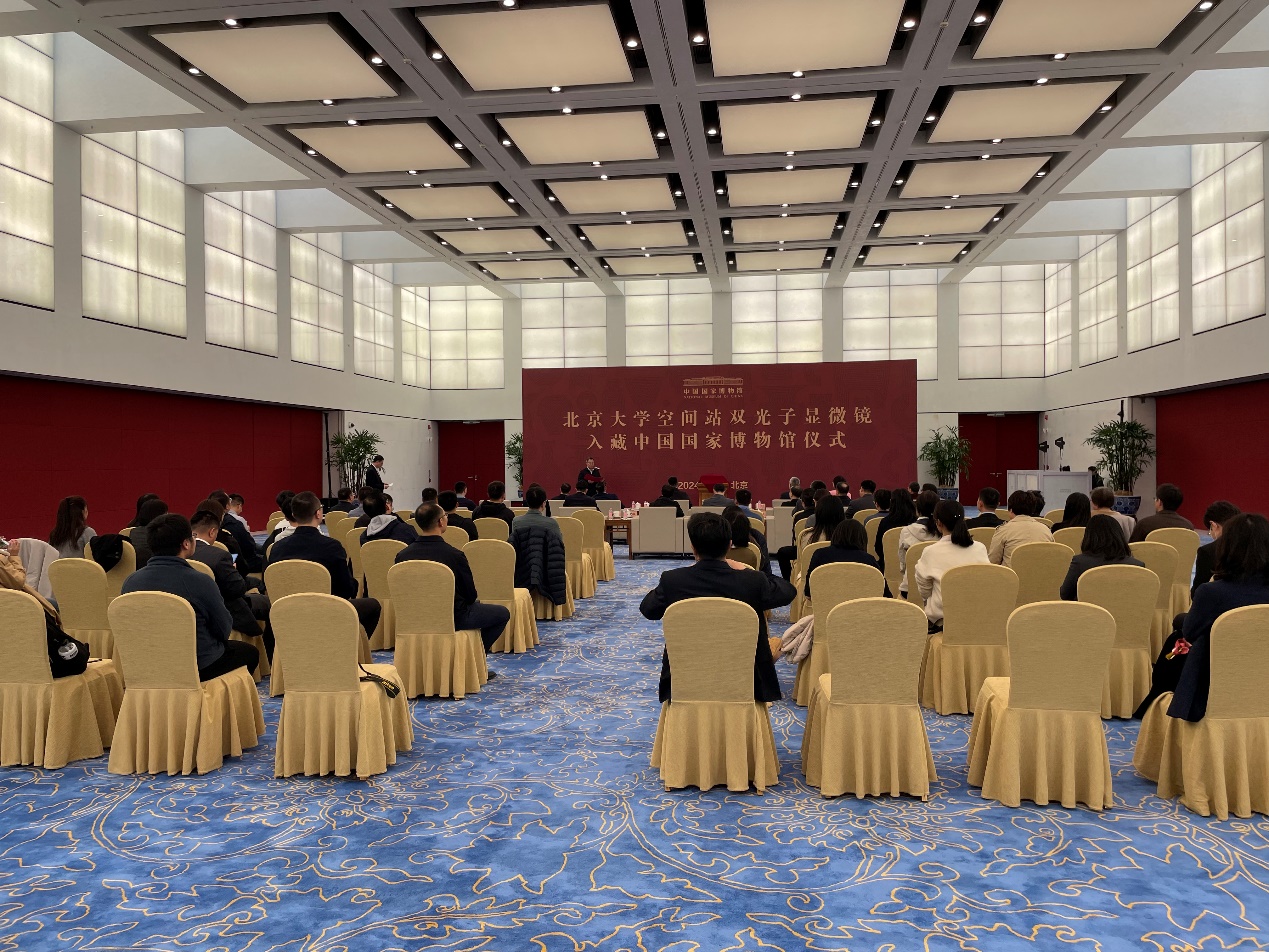
Collection Ceremony Site
On March 15, the "Ceremony of Peking University Space Station Two-photon Microscope in the National Museum of China" was held in the National Museum of China. The ceremony was attended by a distinguished group of guests, including Wang Chunfa, Director of the National Museum of China; Yang Fan, Secretary of the Party Committee; Piao Shilong, Vice President of Peking University and Academician of the Chinese Academy of Sciences; Cheng Heping, Director of Peking University National Biomedical Imaging Center, Academician of the Chinese Academy of Sciences; Chen Shanguang, Former Deputy Chief Designer of the China Manned Spaceflight Engineering Project and Academician of the International Academy of Astronautics; Luo Qun, Former Deputy Director of the Standing Committee of the Nanjing People's Congress of Jiangsu Province; Du Ming, Former Executive Deputy Director of the Department of Life Sciences of the National Natural Science Foundation of China; Luo Qun, former deputy director of the Standing Committee of Nanjing People's Congress of Jiangsu Province; Du Shengming, former deputy director of the Life Science Department of the National Natural Science Foundation of China; Xiao Ruiping, dean of the Peking University Institute of Future Technology; Zhu Huaiqiu, secretary of the Party Committee, and Shang Zhenbai, Deputy Director of the Administration of Science, Technology, Innovation, and Big Data of the Jiangbei New Area of Nanjing. Members of the space station two-photon microscope R&D team were also present. at the ceremony. The ceremony was hosted by Yang Fan.
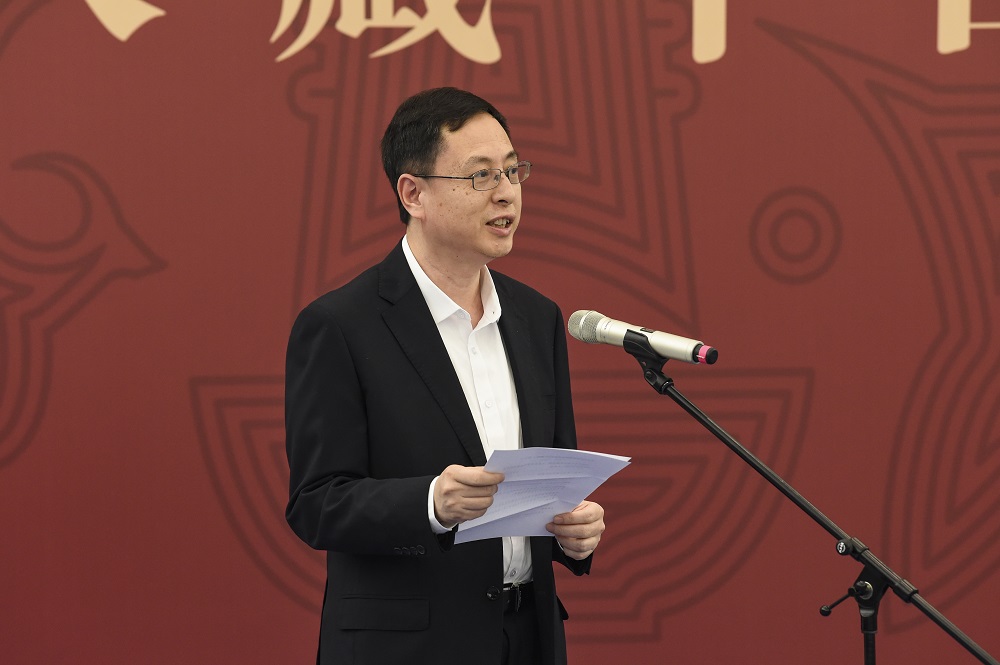
Hosted by Yang Fan
Piao Shilong said in his speech that the success of Academician Cheng Heping and his team in developing the space station two-photon microscope after years of scientific research is a vivid example of Peking University's adherence to the "Four Orientations", taking the initiative to carry out original and leading scientific researches, and focusing on building a national strategic scientific and technological force. The inclusion of the space station two-photon microscope in the National Museum is a full affirmation of Academician Cheng Heping and his team, a powerful testimony to Peking University's academic spirit and scientific research achievements, and an important symbol of the development of China's scientific and technological undertakings and aerospace undertakings.

Speech by Piao Shilong
Wang Chunfa first reviewed the development history of the museum and introduced the collection, emphasizing the importance of cultural relics collection and protection for cultural heritage. He said that the space station two-photon microscope, now part of the collection, is of significant historical value and is a witness to the development of China's science and technology and aerospace industry. The inclusion of this collection in the National Museum will further enrich the museum's collection, and the National Museum will preserve, display and publicize the space station two-photon microscope of the and its significance.
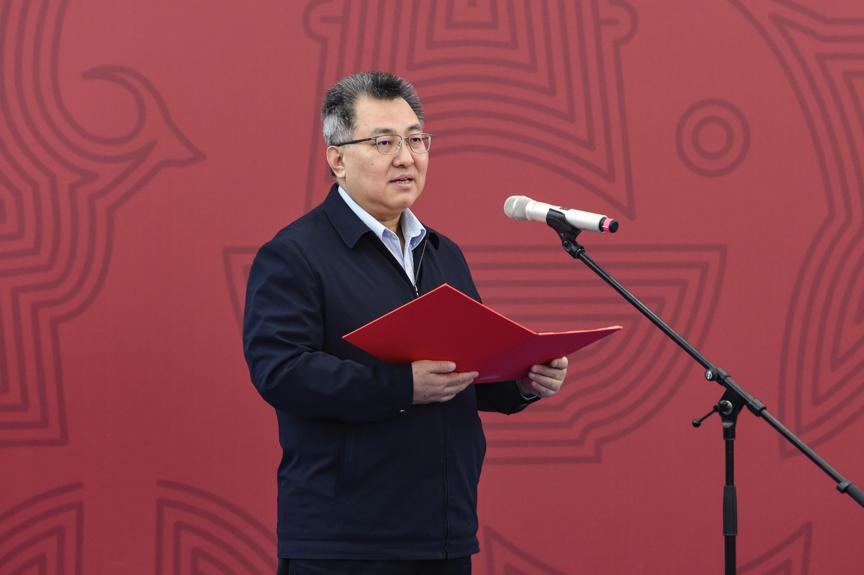
Speech by Wang Chunfa
Cheng Heping reviewed the research and development process of the space station two-photon microscope, and expressed his expectations for the use of the space station platform for brain science research in the future, as well as his gratitude to the relevant supporting organizations and team members. The fact that the space station two-photon microscope of the has been noticed and collected by the National Museum is an affirmation and encouragement for the hard work of the team members. He expressed his hope that the space station two-photon microscope would play its due value in the National Museum, so that more people would know about the achievements in the fields of aerospace medicine and biomedicine in China, and more young people would be inspired to have passion for and pursue scientific exploration.
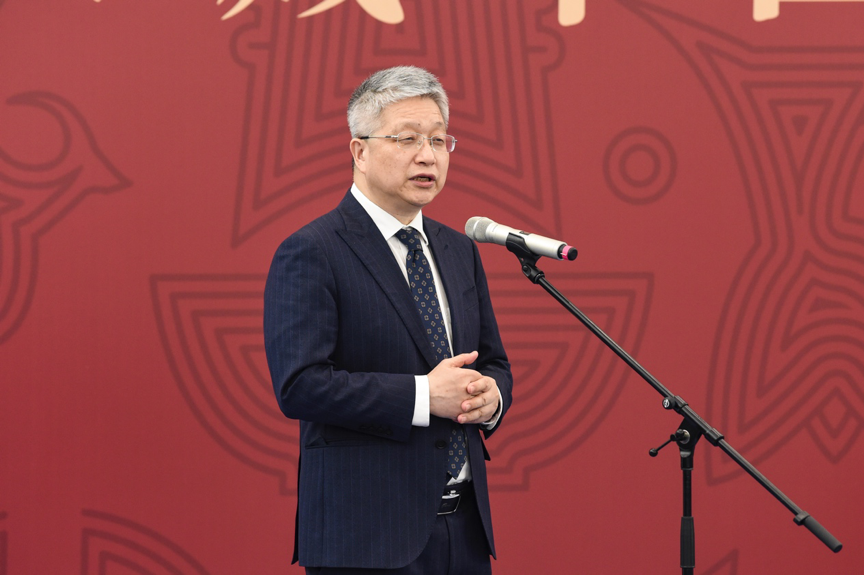
Speech by Cheng Heping
Wang Chunfa and Piao Shilong unveiled the two-photon microscope in the National Museum of China, and then Wang Chunfa presented a certificate of collection to Peking University.
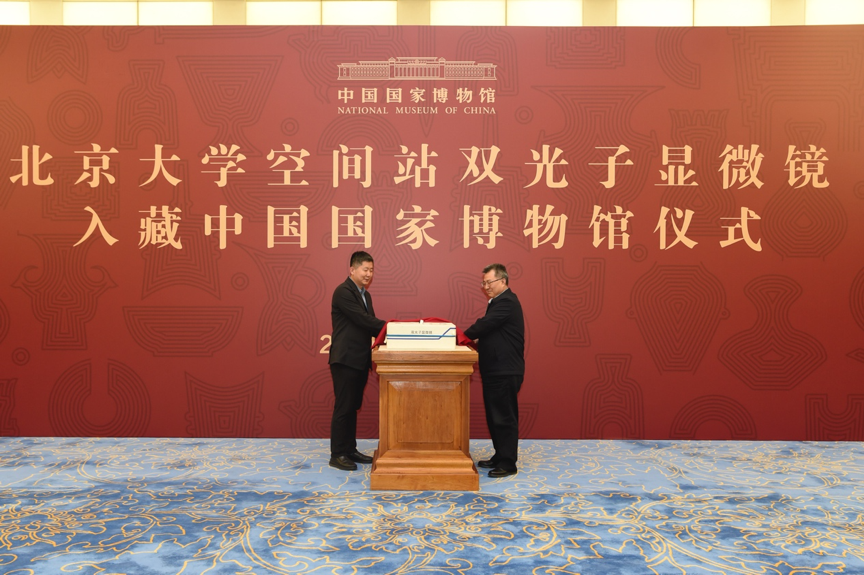
Unveiling of the collection
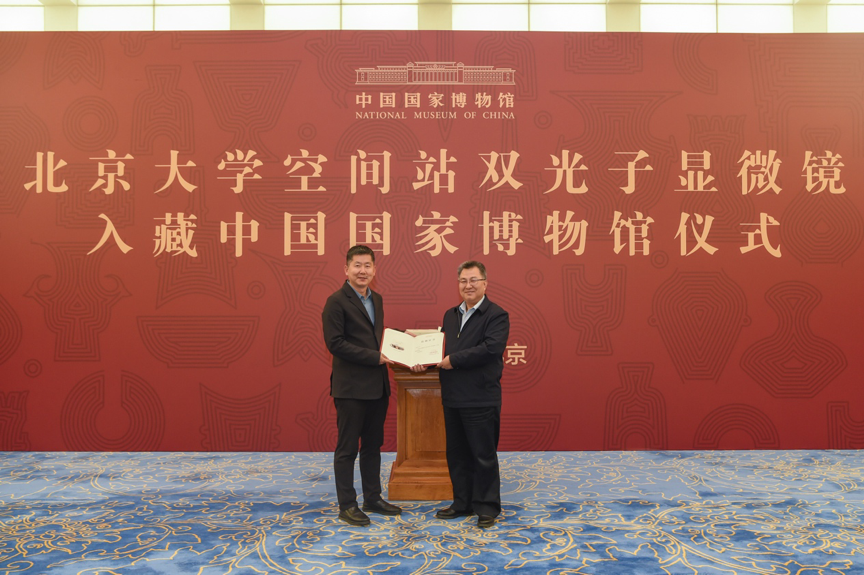
Issuance of collection certificates
After the collection ceremony, Cheng Heping was invited to give a lecture on "To See Life - The Past and Present Life of Miniaturized Two-photon Microscope" at the Lecture Hall of the National Museum.
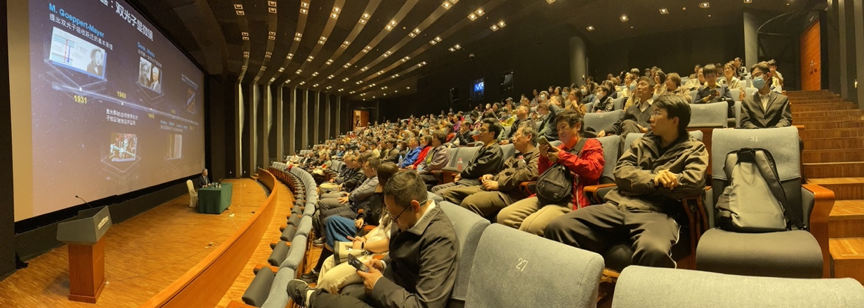
Cheng Heping Lectures at Guobo Lecture Hall
Since 2019, under the support of the China Manned Space Engineering Office, academician Cheng Heping's team, in conjunction with the China Astronaut Research and Training Center, Beijing University of Aeronautics and Astronautics, Peking University's Nanjing Translational Institute of Molecular Medicine, and other units of the scientific research team to overcome the difficulties, and on the basis of the successful development of miniaturized two-photon microscope in the early stage, in September 2022, successfully developed a two-photon microscope in the space station. On November 12 of the same year, the two-photon microscope arrived at the Chinese space station aboard the Tianzhou V cargo spacecraft, becoming the world's first two-photon microscope to enter space. in February 2023, the two-photon microscope for the first time observed the astronauts' skin cell structure and metabolism composition and other information on-orbit, which provides an important technological means to carry out aerospace medicine and brain science research in the future by utilizing the platform of the Chinese space station.
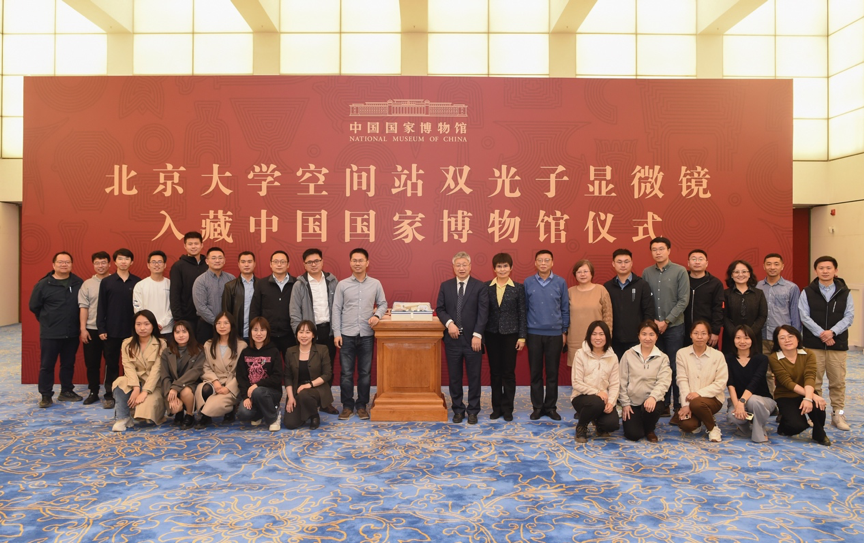
Group photo of R&D team
As the highest institution that collects, researches, displays and interprets the representative evidence that can fully reflect the excellent traditional Chinese culture, revolutionary culture and advanced socialist culture on behalf of the state, the National Museum is the highest historical, cultural and artistic hall and cultural living room of the country. For a long time, Peking University and the National Museum have established a profound friendship, with close cooperation and frequent exchanges and interactions between the two sides. A number of landmark physical achievements, such as the Peking University Chinese Character Laser Phototypesetting System, have been successively collected in the National Museum.




